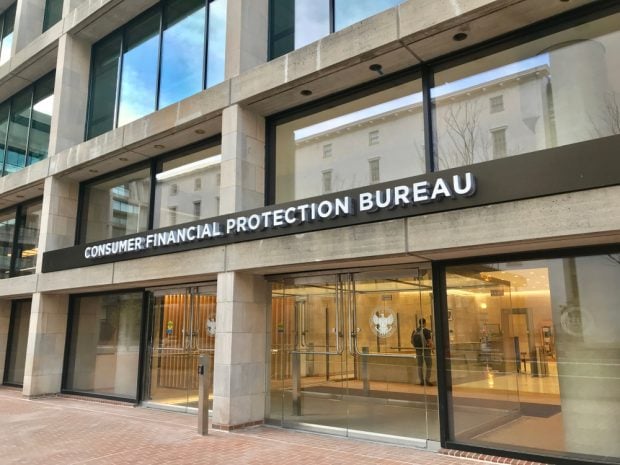Credit unions and other financial institutions had better get ready to embrace multitasking if they intend to be ATM operators much longer, according to a new report from ATM Marketplace and Italian software provider Auriga.
The report, which surveyed more than 300 ATM industry members and more than 1,000 ATM end-users in the United States and the United Kingdom, found consumers still like to hit the ATM – 63% of respondents used one at least monthly – but they want ATMs to do a lot more for them.
A whopping 70% said they'd like ATMs to offer cash in denominations other than just $20 bills, for example, and 39% want ATMs to perform real-time transactions. The survey also found 34% want biometric identification to replace PIN entry and 32% want check-cashing capabilities. About one in four said they want an email receipt option and 19% want bill pay.
“Even though the technology is available, there needs to be a major change of mind-set within many banks about the greater role that ATMs can play in improving customer experience and services,” Auriga Chief Marketing Officer Antonella Comes said. “The current position tends to be too rigidly fixed on offering a limited set of services and reducing operating cost.”
Consumers do appear to have some limits on what they want from modern ATMs, however. Fewer than 10%, for example, said they wanted ticket sales, complex transaction functions, charitable donation abilities, prepaid card offerings or even contactless cash withdrawal – a technology currently receiving considerable attention in the industry. Though more consumers said they'd rather have an ATM nearby than a branch nearby, almost two-thirds also said they'd rather go to a branch than use a drive-up video ATM with a remote teller.
Cash as the Antidote
Even though most of the survey's industry respondents (56%) think that five years from now at least a fifth of ATM transactions will be for something other than cash withdrawals, cash is what may be positioning ATMs to capitalize on concerns about data breaches.
More than one in three consumers (36%) said they plan to start using cash more if data breaches continue or get worse; another 29% said they'd start thinking about it “very seriously,” according to the survey.
Additionally, consumers said they think mobile wallets are far less secure than credit cards, checks, debit cards and prepaid cards. In fact, the only thing they felt was less secure than mobile wallets was virtual currency such as bitcoin.
Of course, ATMs face their own fraud challenges, though they may be less pressing in the minds of end-users. About half of consumers (51%) in the survey said they are aware of skimming devices but aren't that concerned about them or never think about it. About half believe EMV will help keep their ATM transactions more secure, though a fair number are skeptical: 15% believe EMV won't make much difference because they think criminals will find a way to crack it.
Looking Ahead
Mobile technology and branch transformations with a focus on self-service will be major drivers in the global ATM industry over the next five years, according to the survey. But costs appear to be the bigger fish to fry right now. A full 69% of industry members said their largest threat is the increasing expense of upgrades, maintenance, security, cash-handling and other similar items.
That's not their only worry, of course. At least half the respondents also said card skimming and counterfeit fraud, as well as malware attacks were major threats. Plus, only 47% of respondents thought more than half of U.S. ATM deployers will be EMV-compliant in 2017.
“Though the global move to EMV will address skimming in the future, the problem today lies in the continued use of magnetic-stripe technology on payment cards. Magnetic-stripe technology is an easy target for criminals. Until all consumers have EMV chips on their cards and card issuers remove the magnetic stripe, this problem seems here to stay,” TMD Security Global Security Director Claire Shufflebotham noted in the report.
Credit unions lag slightly behind megabanks in terms of ATM upgrades, according to CO-OP Financial Services Senior Product Manager Terry Pierce.
“This is to be expected because larger banks are typically given priority with vendors due to the sheer size of their fleets and budgets,” she said in the report. “Many large banks also have deep internal resources they can tap to develop the technology, which makes them less dependent on their vendors as well.”
Cost may be hindering upgrades for a few credit unions, but those who wait do so at their peril.
“As EMV becomes more common at the ATM, machines without its protection will be even more susceptible to card skimming. You do not want to be the last holdout,” she warned.
Complete your profile to continue reading and get FREE access to CUTimes.com, part of your ALM digital membership.
Your access to unlimited CUTimes.com content isn’t changing.
Once you are an ALM digital member, you’ll receive:
- Breaking credit union news and analysis, on-site and via our newsletters and custom alerts
- Weekly Shared Accounts podcast featuring exclusive interviews with industry leaders
- Educational webcasts, white papers, and ebooks from industry thought leaders
- Critical coverage of the commercial real estate and financial advisory markets on our other ALM sites, GlobeSt.com and ThinkAdvisor.com
Already have an account? Sign In Now
© 2024 ALM Global, LLC, All Rights Reserved. Request academic re-use from www.copyright.com. All other uses, submit a request to [email protected]. For more information visit Asset & Logo Licensing.









